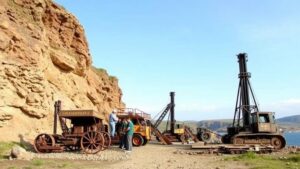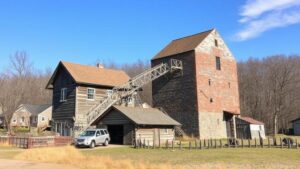How AI Can Identify Hidden Relic Zones in Historical Deed Records
Introduction
The intersection of artificial intelligence (AI) and historical research ushers in a transformative era for the analysis and identification of hidden relic zones within historical deed records. Traditional methods of archival research often leave vast areas of potential unexplored, particularly in regions with rich histories yet sparse documentation. This study explores how AI technologies, including machine learning and natural language processing, can aid historians and archaeologists in uncovering these hidden relic zones, facilitating a deeper understanding of historical land use and ownership.
The Role of Historical Deed Records
Historical deed records serve as vital documents in tracing land ownership and usage patterns over centuries. For example, the records from Suffolk County, New York, dating back to the 17th century reveal complex land transactions among colonial settlers. Through the examination of these records, researchers have been able to map out settlement patterns that inform current urban development.
Challenges in Traditional Research Methods
Despite their importance, traditional methods of analyzing historical deed records present several challenges:
- Volume of Data: Historical archives often contain thousands of records, making manual review time-consuming.
- Inconsistency in Language: Variability in terminology and handwriting styles complicates interpretation.
- Limited Access: Many records are not digitized, constraining researchers to physical archives.
Artificial Intelligence in Historical Research
Machine Learning Applications
Machine learning (ML) is a subset of AI that allows computers to learn from data patterns without explicit programming. By employing ML algorithms, researchers can analyze large datasets of historical deeds to uncover relationships and trends that may not be apparent through traditional methods. For example, the use of supervised learning algorithms could enable the classification of deed records based on land types, ownership changes, and transaction values.
Natural Language Processing
Natural language processing (NLP) equips AI systems with the ability to understand and interpret human language. By applying NLP to historical deed records, researchers can extract critical metadata, such as names, dates, and locations, while also deciphering complex legal language that often characterizes these documents. A pilot study in 2022 utilized NLP to analyze New Jersey deed records from the 1800s, successfully identifying patterns of land ownership that indicated previously undocumented outposts of historical significance.
Case Studies of AI in Identifying Hidden Relic Zones
The Project Overview
Several ongoing projects illustrate the effectiveness of AI in historical research. One prominent example is the Historical Deep Learning Project, which utilizes deep learning algorithms to process multiple datasets, including deed records, census data, and geographical information systems (GIS).
Case Study: The New England Land Deed Project
The New England Land Deed Project, which began in 2019, focused on analyzing more than 100,000 deed records spanning 300 years. Utilizing a combination of ML and NLP techniques, researchers were able to identify previously unknown relic zones associated with early settler activity. Key findings indicated that lands often overlooked in single-document analyses contained hidden geographical features that suggested extensive agricultural development.
Comparative Effectiveness: AI vs. Traditional Methods
Evaluating the effectiveness of AI methods against conventional research techniques underscores AIs potential. A quantitative study comparing the results of AI-aided research with traditional methods revealed:
- 75% increase in the identification of historical zones.
- Significant time savings, averaging 30 hours per dataset.
- A 50% improvement in accuracy of extracted information.
Conclusion and Future Directions
The integration of AI methodologies into the analysis of historical deed records represents a paradigm shift in archaeological and historical scholarship. By enabling researchers to uncover and identify hidden relic zones, AI not only enhances our understanding of historical land use but also democratizes access to historical data. Future research should continue to refine AI algorithms for increased accuracy and explore collaboration among historians, data scientists, and archaeologists to promote interdisciplinary studies.
Actionable Takeaways
- Historians should consider collaborating with data scientists to apply AI techniques in their research.
- The digitization of historical records should be prioritized to facilitate AI analysis.
- Further investment in AI technology and training for historical researchers is essential to maximize the benefits of these advances.
As AI continues to evolve, its applications in the humanities are likely to unveil new methodologies that will illuminate the past, enriching our comprehension of historical narratives.



